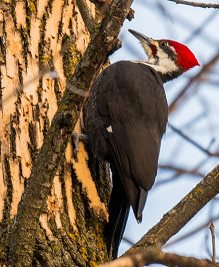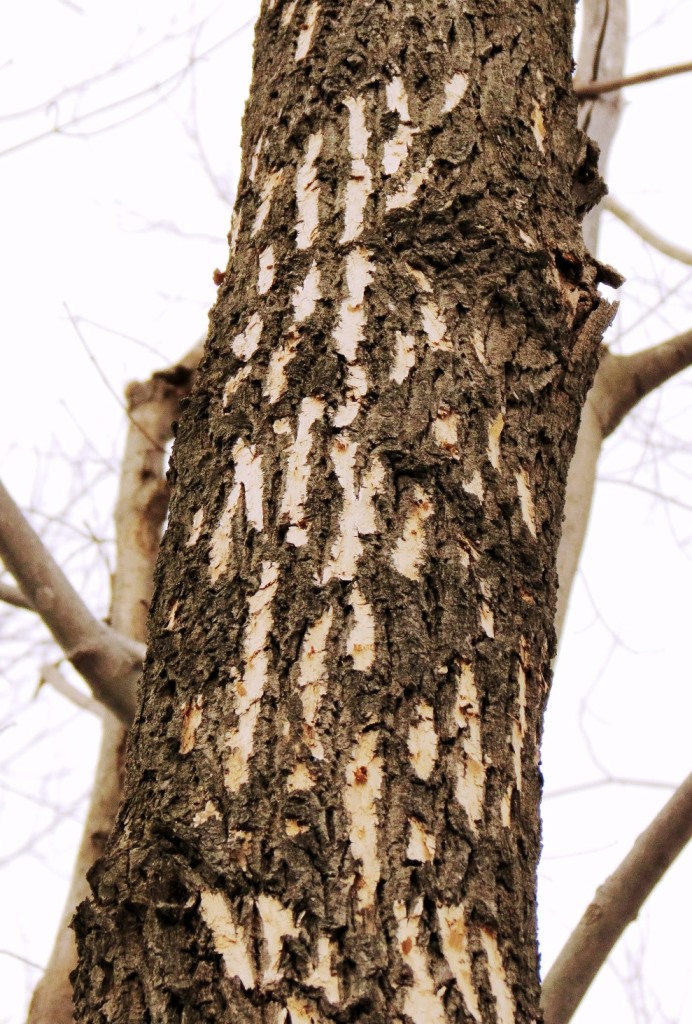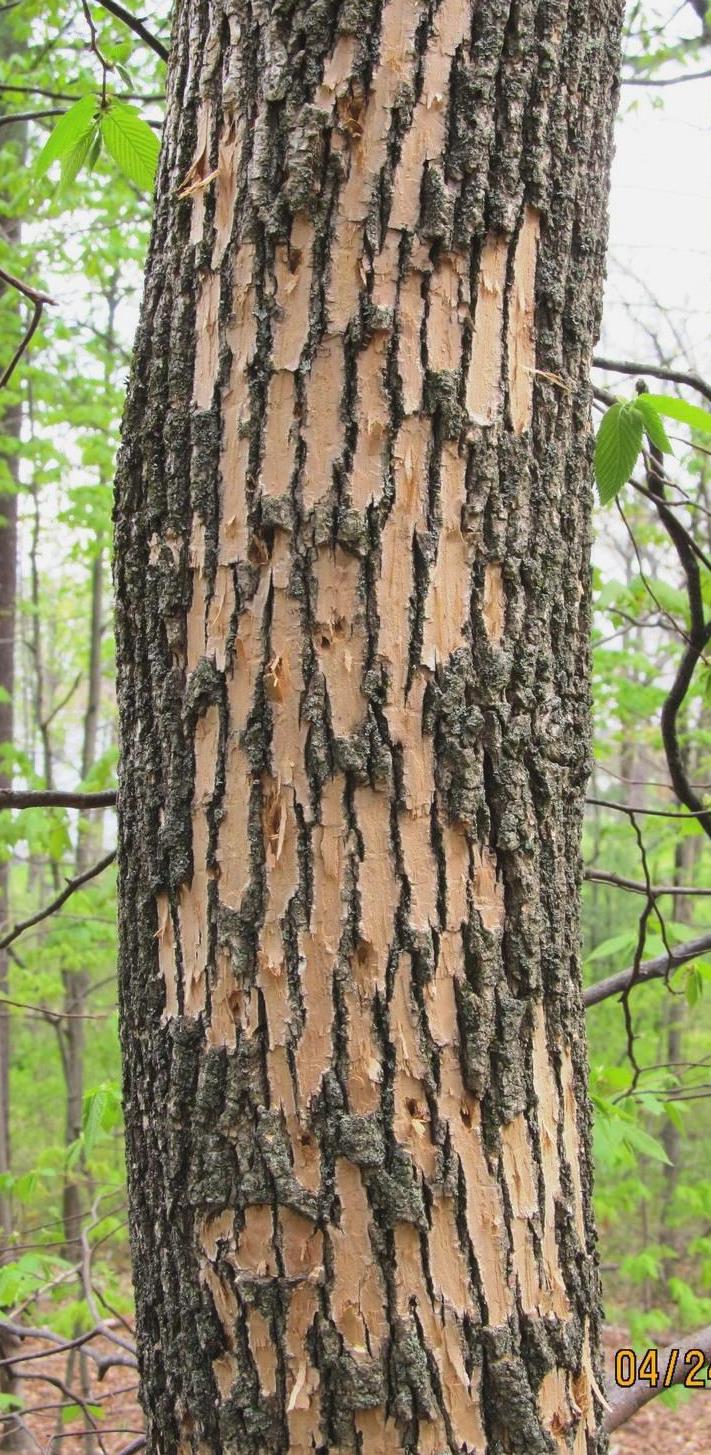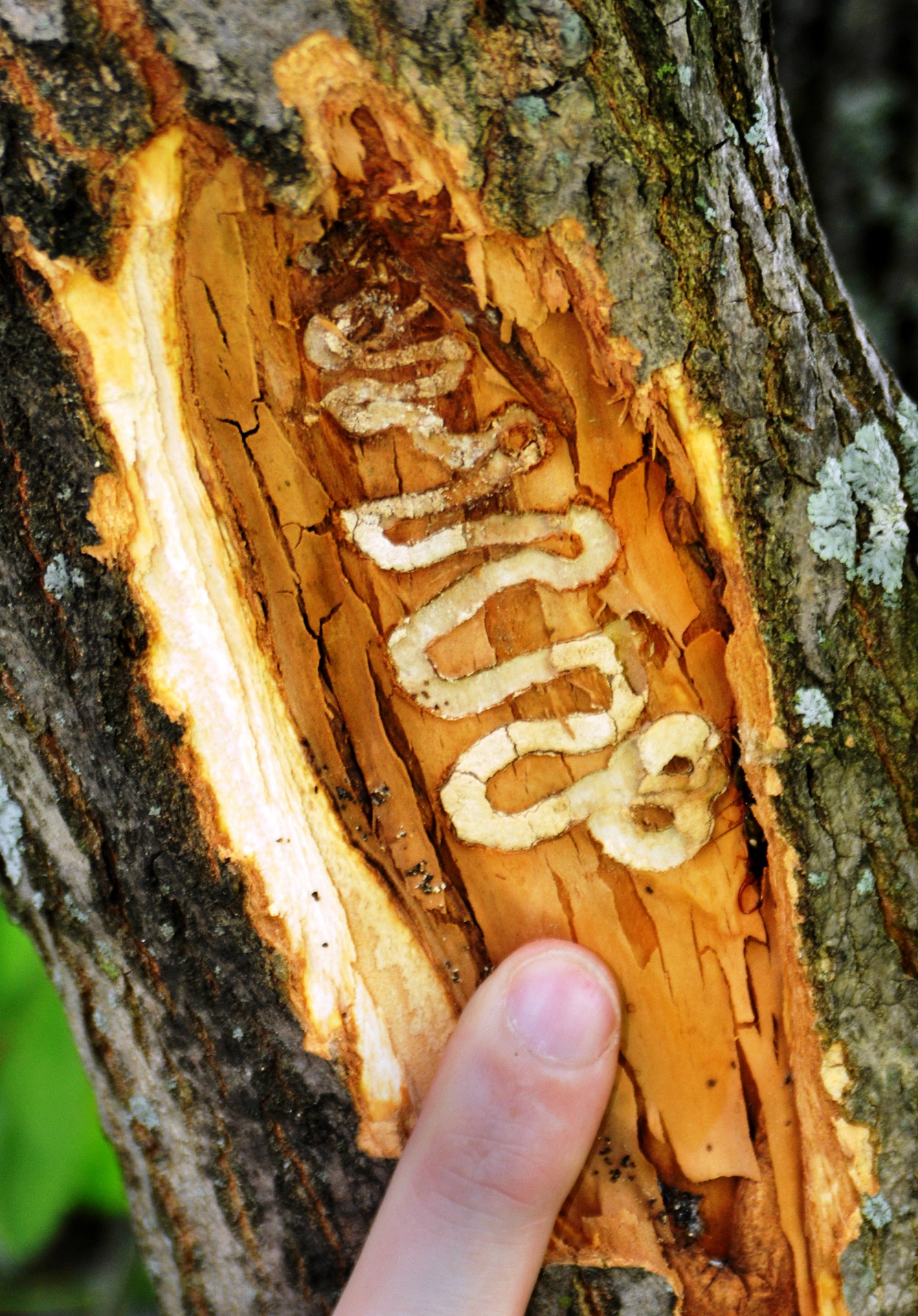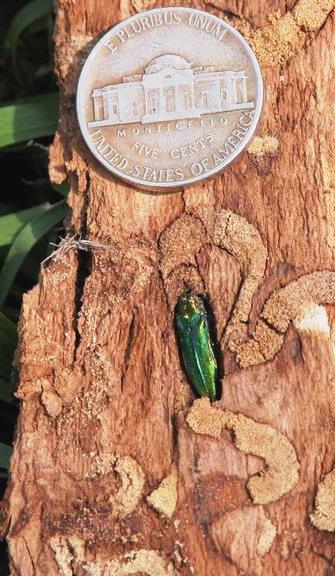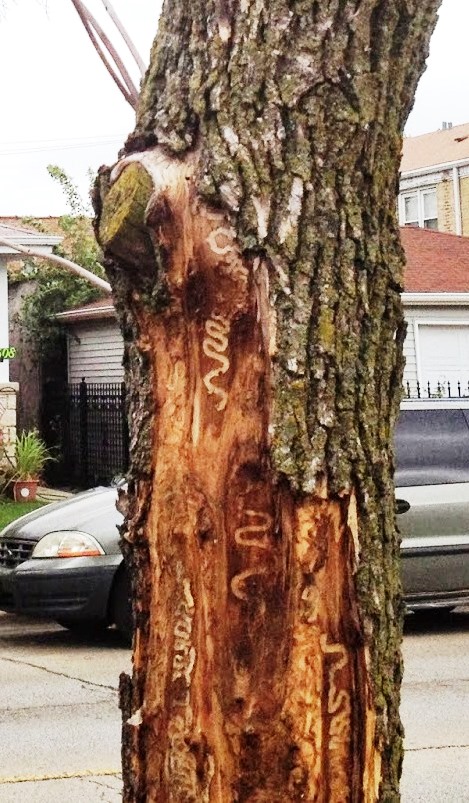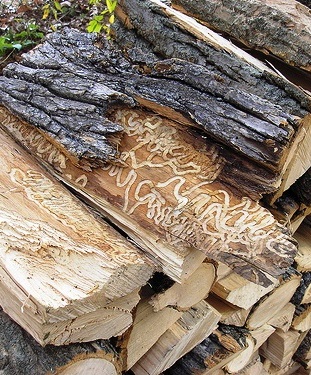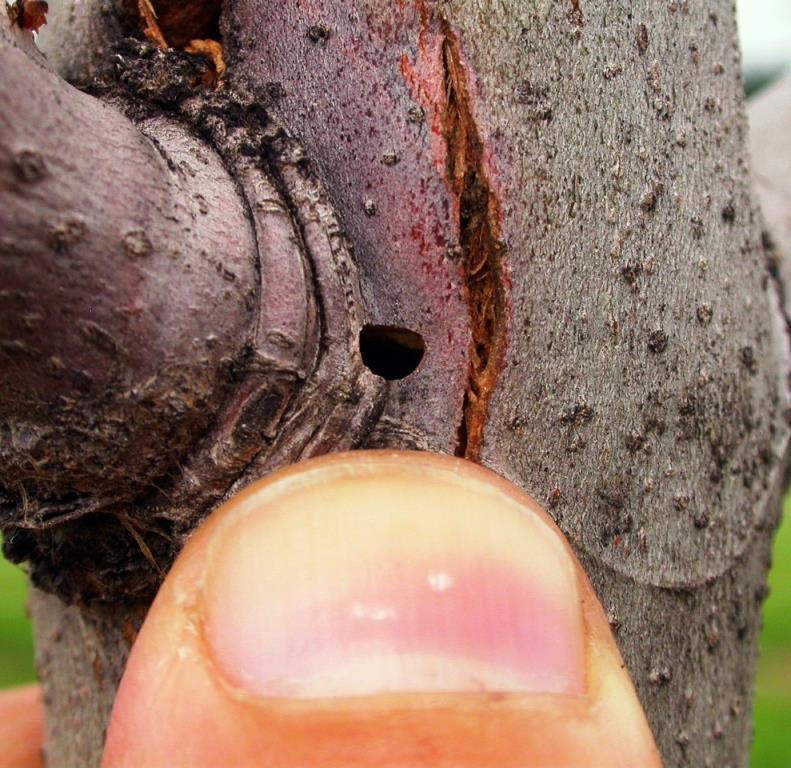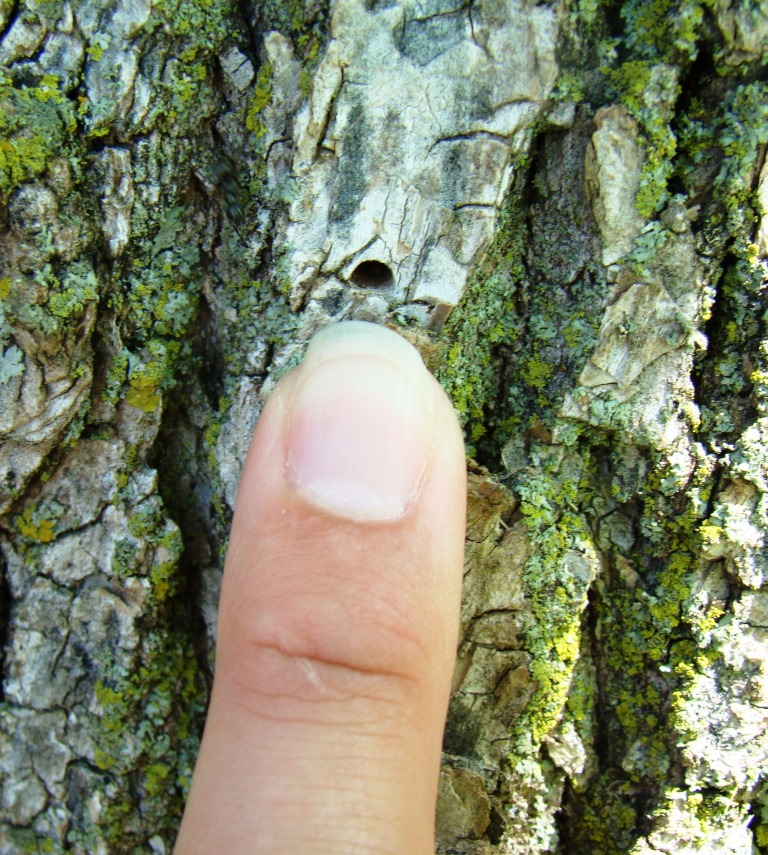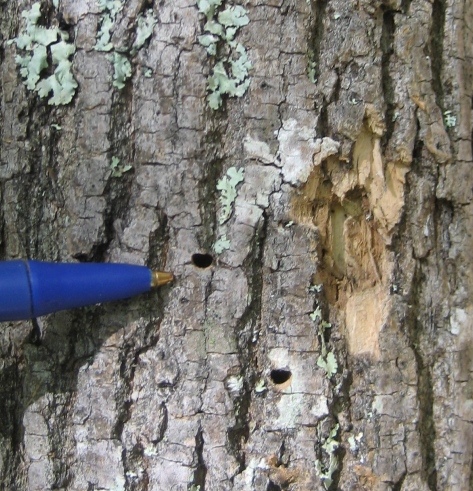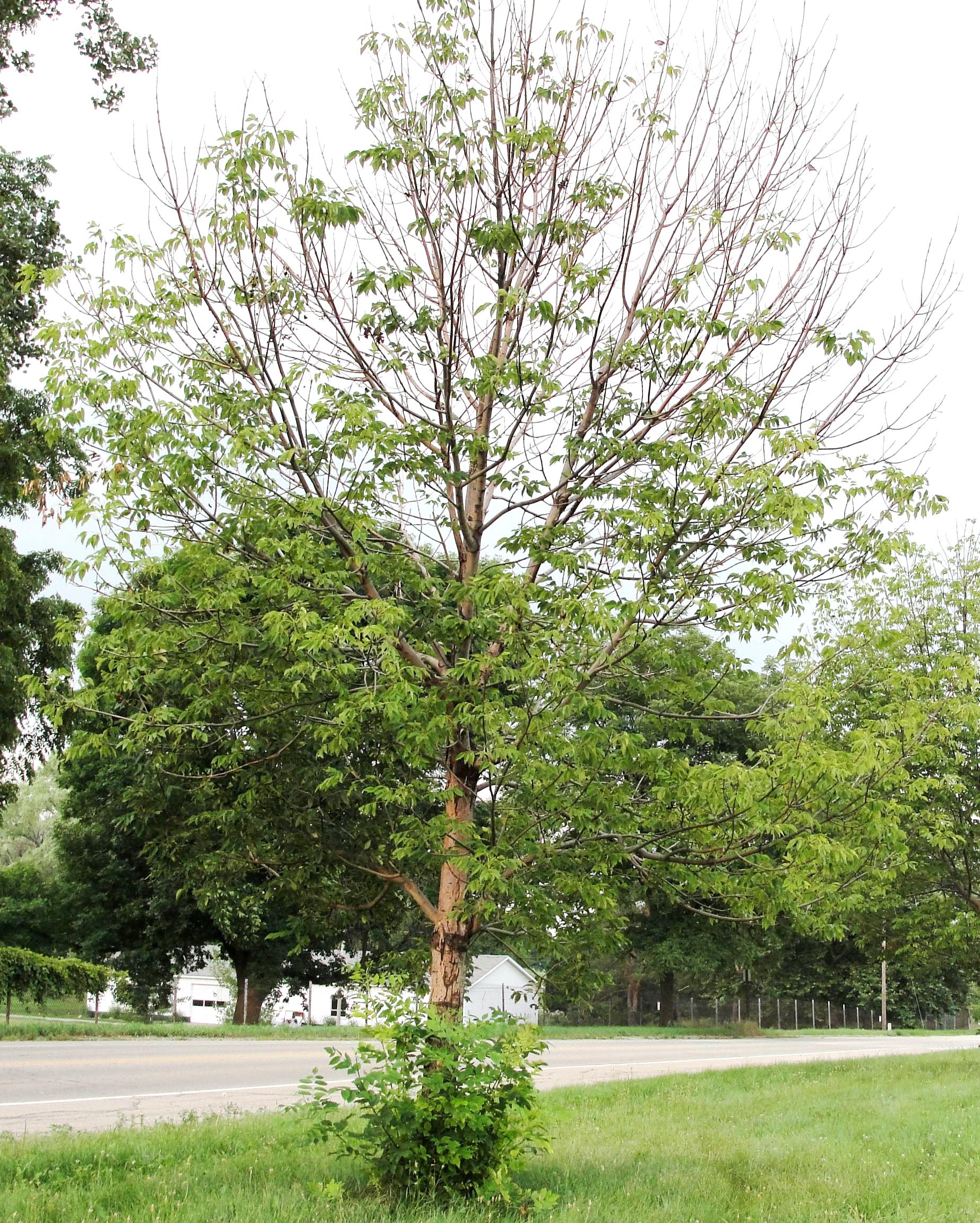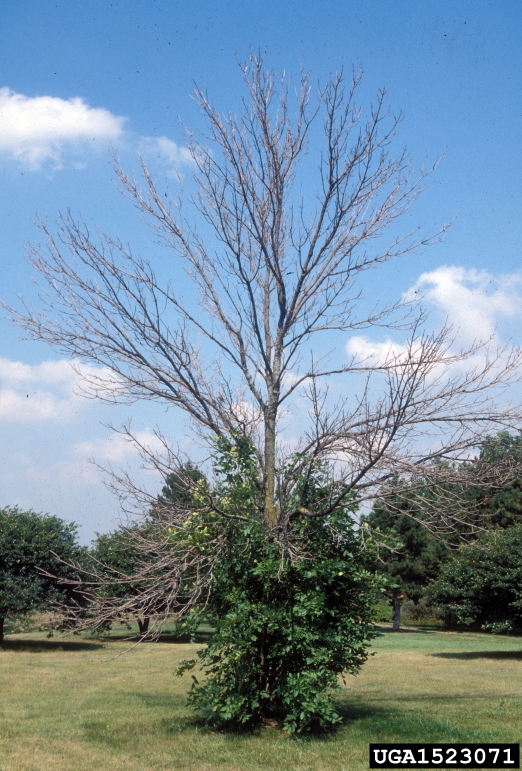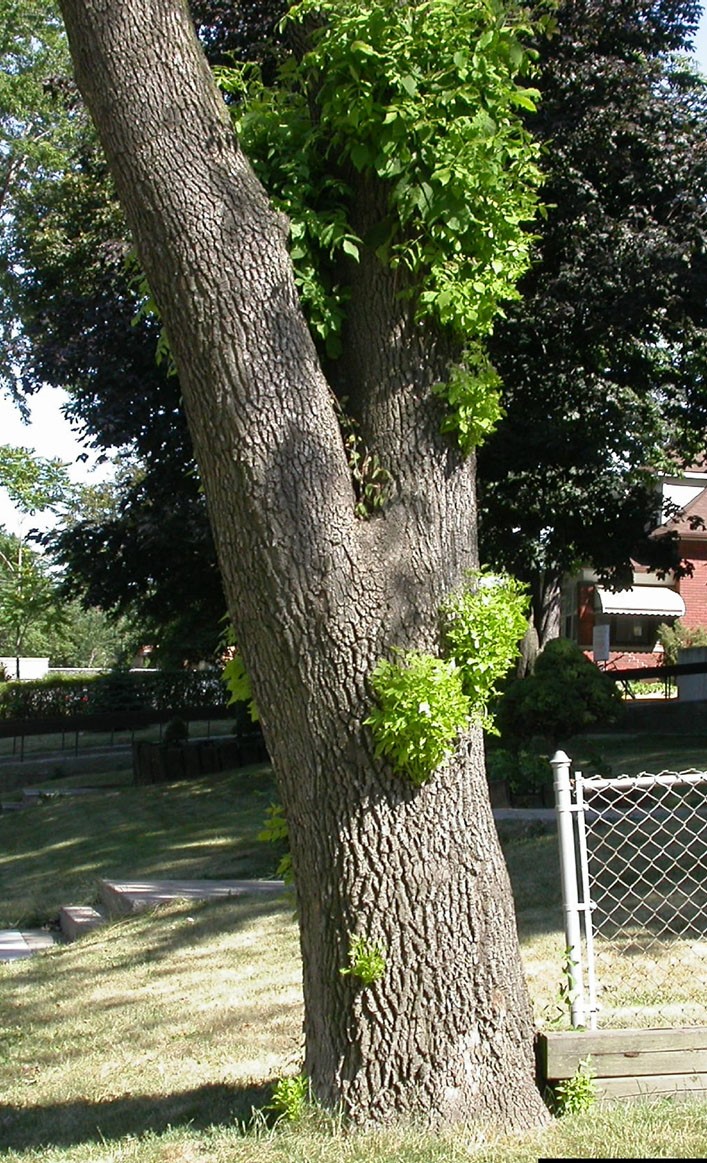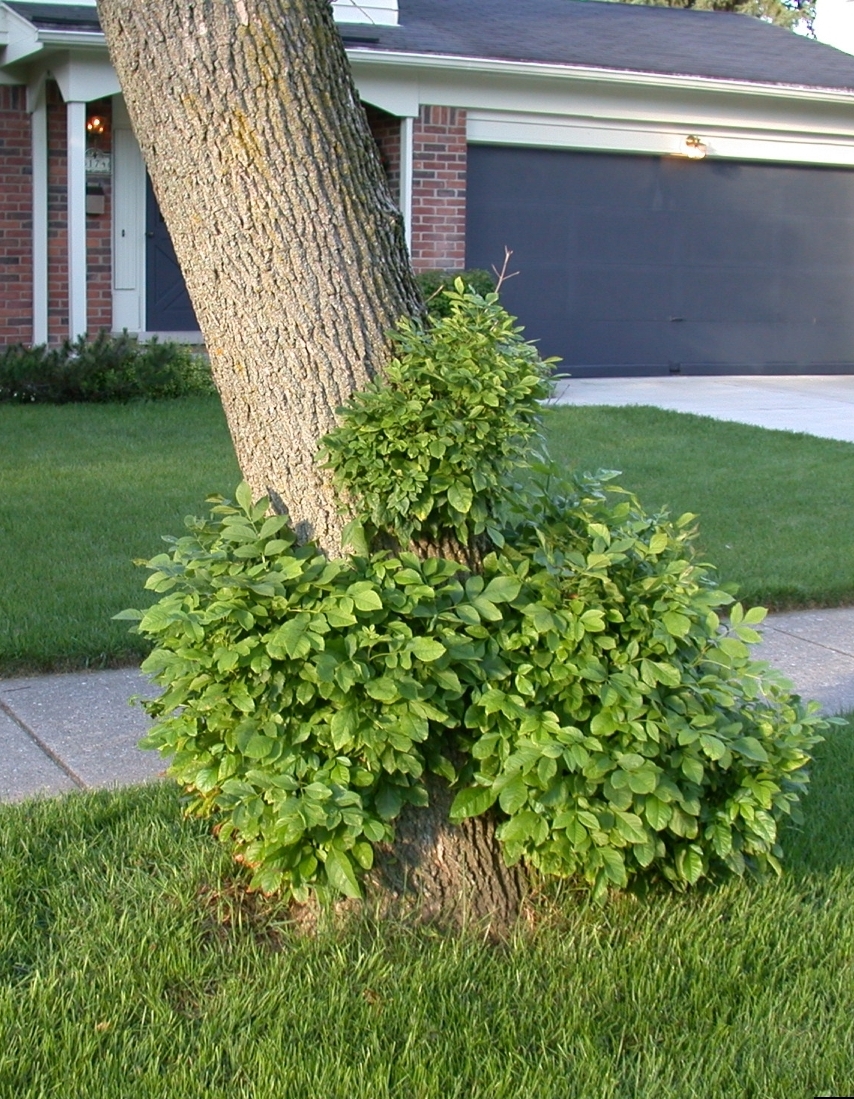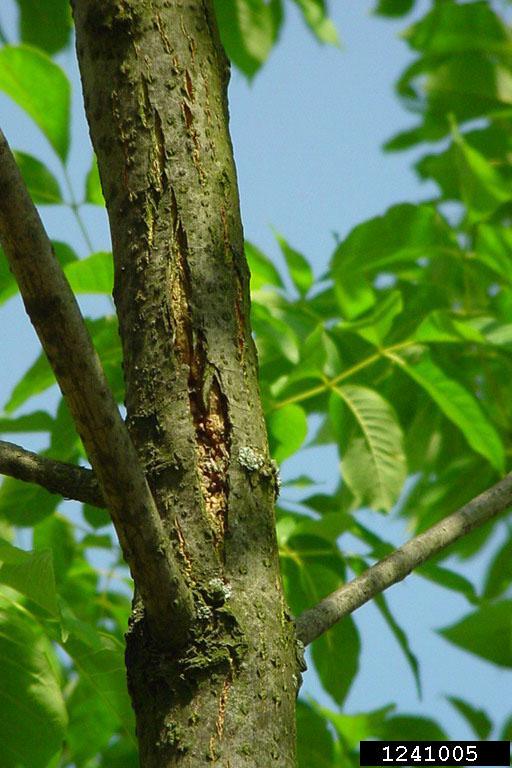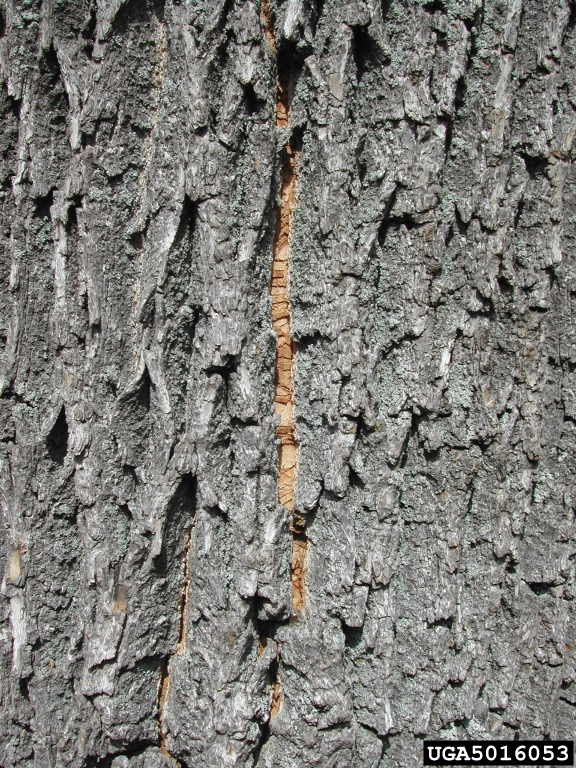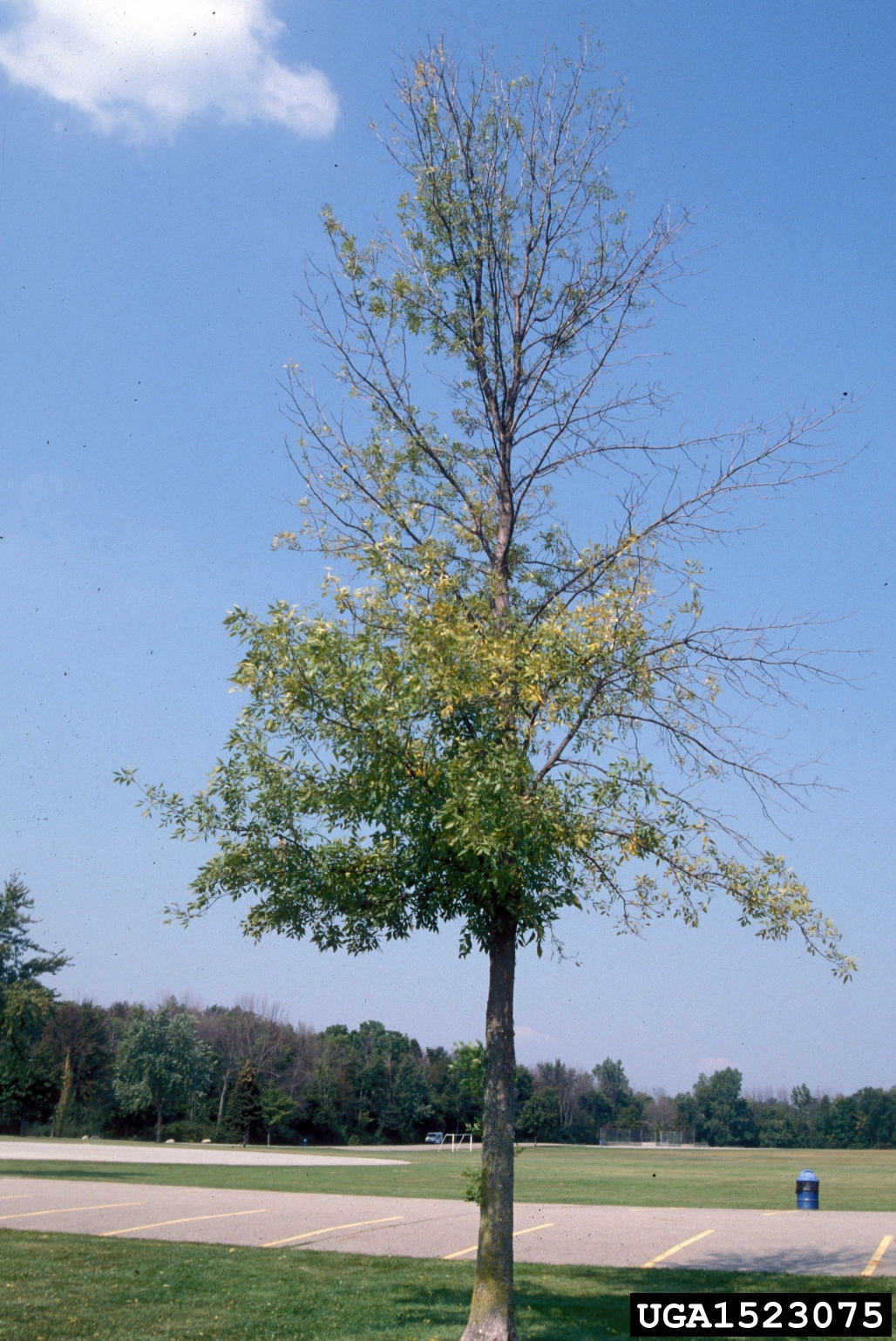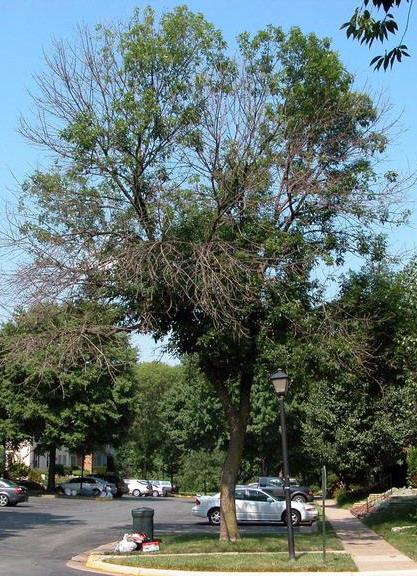DACF Home → Bureaus & Programs → Maine Forest Service → About Us → Forest Health & Monitoring → Invasive Threats to Maine's Forests and Trees → Emerald Ash Borer (EAB) → Signs and Symptoms
Signs and Symptoms of Emerald Ash Borer Infestation
If you see these signs on ash trees, please take pictures and report your findings.
Click on images to enlarge
Woodpecker Activity "blonding"Woodpeckers fleck the outer bark looking for EAB larvae and pupae, creating a "blonding" effect. |
(photo credits, left to right: Robert Berry, ?, Jenn Forman Orth (MDAR), Kenneth R. Law (USDA) |
S-Shaped TunnelsEAB larvae feed in a serpentine pattern under the bark.
|
(photo credits, left to right: John Obermeyer (Purdue University), Eric R. Day (Virginia Polytechnic Institute), ?, Mike Kelly (Flickr) |
D-Shaped Exit HolesEmerging adult beetles make D-shaped holes to exit the tree.
|
(photo credits, left to right: Cliff Sadof (Purdue University), ?, Rebecca Hargrave (Cornell Cooperative Extension) |
Epicormic ShootsSprouts grow from roots and trunks in an abnormal way. |
(photo credits, left to right: Leah Bauer (USDA Forest Service), Daniel Herms (The Ohio State University), Edward Czerwinski (Ontario Ministry of Natural Resources), Pennsylvania Department of Conservation and Natural Resources - Forestry |
Bark Splits and Crown DiebackLarval feeding under the bark causes the bark to split; excessive feeding causes the crown to die. |
(photo credits, left to right: Michigan Department of Agriculture, Pennsylvania Department of Conservation and Natural Resources - Forestry, Daniel Herms (The Ohio State University), Eric R. Day (Virginia Polytechnic Institute) |
